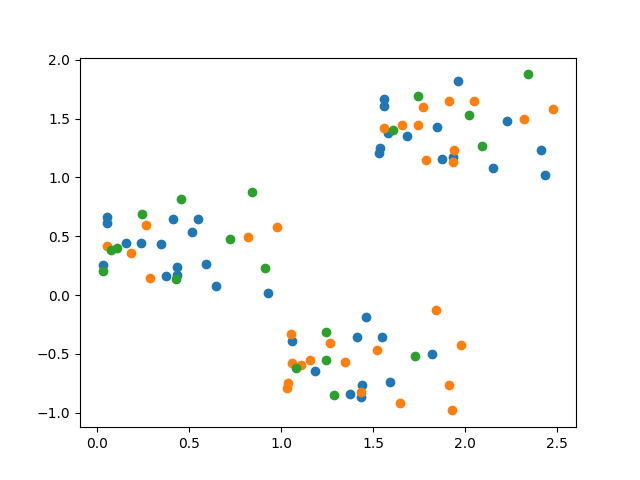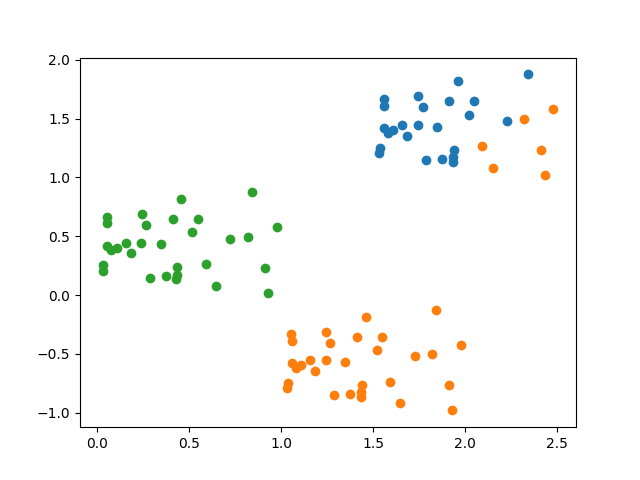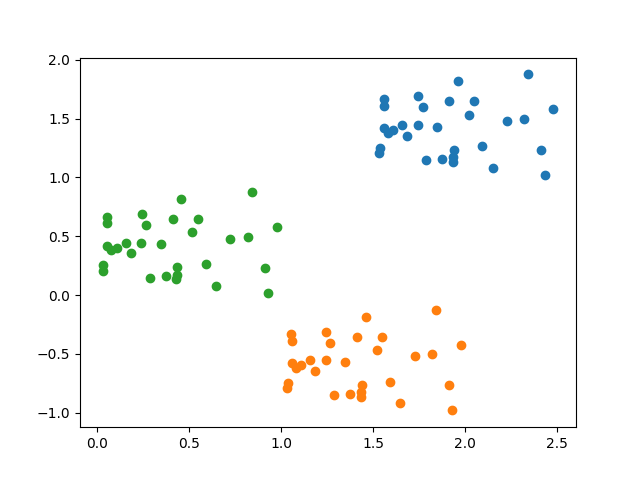データをクラスタリングするk-means法を書いてみた (Python 編)
以前に MATLAB で書いた教師無しクラスタリング法 k-means のコードを、Python で書き直してみました。ほぼ初の Python コードなので、怪しいかもしれませんが、ひとまず動きました。
↓ 初期状態

↓ 1サイクル目

↓ 2サイクル目 (収束)

import numpy as np import matplotlib.pyplot as plt def plotPoints(x, y, clu, k): fig = plt.figure() ax = fig.add_subplot(111) for i in range(k): ax.scatter(x[clu == i], y[clu == i]) # data n = 30 x = np.random.rand(n) x = np.hstack([x, x + 1, x + 1.5]) y = np.random.rand(n) y = np.hstack([y, y - 1, y + 1]) # number of clusters k = 3 # assign initial clusters randomly clu = np.random.randint(0, k, len(x)) plotPoints(x, y, clu, k) plt.savefig('0.png') plt.show() ite = 0 while ite < 10: ite += 1 # centroids of clusters vx = [] vy = [] for i in range(k): idx = clu == i vx.append(np.mean(x[idx])) vy.append(np.mean(y[idx])) # distance between the centroid and each point d = np.zeros([n * 3, k]) for i in range(k): d[:, i] = np.sqrt((x - vx[i]) ** 2 + (y - vy[i]) ** 2) # assign new clusters newClu = np.argmin(d, axis=1) if all(newClu == clu): break else: clu = newClu plotPoints(x, y, clu, k) plt.savefig(f'{ite}.png') plt.show()